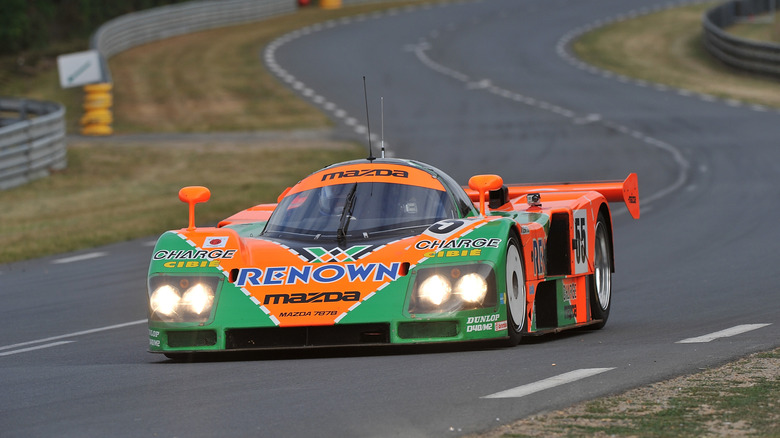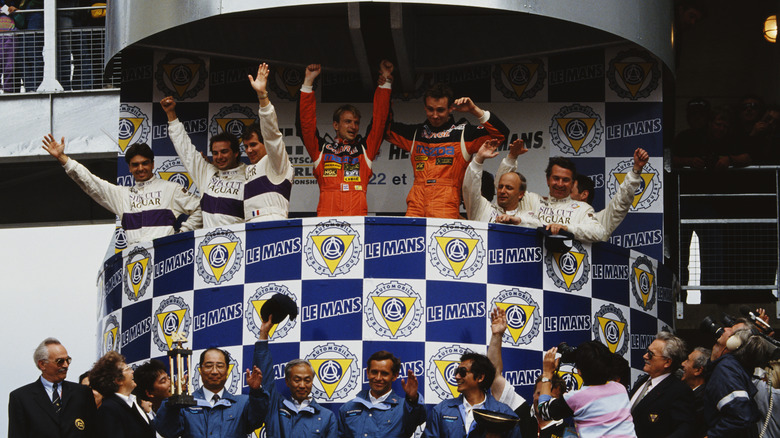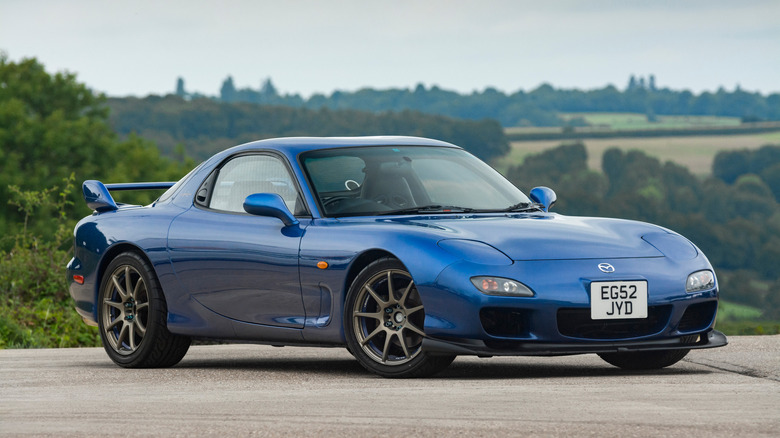Why The Mazda 787B's Rotary Engine Survived The 24 Hours Of Le Mans (But Can't Hold Up To Daily Driving)
The Mazda 787B carved its name into motorsport history in 1991 as the first Japanese car to win the 24 Hours of Le Mans overall. Even more legendary was its powertrain, a screaming 2.6-liter quad-rotor engine, the R26B, that gave the 787B a unique advantage over its piston-powered rivals. This win wasn't just a fluke; it was the product of smart engineering and even smarter race management. The timing couldn't have been more perfect for Mazda as the FIA were to ban the Mazda 787B from Le Mans the following year.
The R26B could produce around 900 horsepower at 10,000 rpm in testing, though for the race it was dialed back to roughly 700 hp to ensure reliability. The rotary's design — low internal friction, a high power-to-weight ratio, and a smooth rev range — made it ideal for the demands of endurance racing. Mazda fitted the engine with three spark plugs per rotor and variable-length intake trumpets to maximize the efficiency and power output of the engine.
Mazda also called upon veteran endurance racer Jacky Ickx to help design their race strategy, which was centered around one main thing — outrunning the competition. The 787B was almost 400 lbs lighter than the other cars on the grid due to rotary-specific regulation allowances, which further aided in conserving tires and brakes. Outside of regular fuel stops and minor wear part changes, the 787B required minimal servicing over 362 laps, proof that when tuned and treated right, the rotary engine could go the distance.
Why the 787B's rotary thrived at Le Mans
The R26B's Le Mans success boiled down to exploiting every advantage the rotary offered in a purpose-built racing environment. At around 1,830 pounds (830 kg), the 787B was significantly lighter than its rivals. Regulations let Mazda take full advantage of the rotary's compact form, allowing more favorable weight and aerodynamic tuning.
The rotary engine's inherently fewer moving parts reduced vibration and mechanical stress, which meant it could run reliably at extremely high RPMs for long periods — perfect for a 24-hour sprint. With less internal resistance and fewer wear-prone components, the engine ran cooler and more efficiently than many traditional race engines.
Mazda also managed to squeeze out surprisingly strong fuel economy when compared to the rest of the field. Detuning the R26B for endurance helped the car go longer between pit stops, a huge advantage in a race where time spent refueling can decide podium places.
Combined with fewer mechanical issues than competitors, these factors let Mazda outlast more powerful but less efficient rivals. In this specific environment, the rotary's strengths were more than just usable, they were unbeatable. Unfortunately, the rotary engines didn't adapt to all environments, leading to the scrapping of some iconic Mazda cars that shouldn't have been discontinued.
Why the rotary fails in daily driving
Despite its Le Mans glory, the rotary engine has never found lasting success on the street. The same features that made the R26B effective in a race, its high-revving design and lightweight internals, become liabilities in normal driving conditions. Daily driving demands low-end torque, reliability, and efficiency, none of which are a rotary engine's strengths on normal roads.
One of the biggest drawbacks is wear. Rotary engines rely on apex seals to maintain compression, and those seals are infamous for degrading at a rapid rate. Rotaries also burn high amounts of oil and suffer from poor heat management. These downfalls result in frequent maintenance, backfiring, and high emissions — issues that persisted from one of Mazda's most successful models, the RX-7, into the final iteration of the rotary engine in the RX-8.
Emission regulations ultimately dealt the final blow. Even with clever engineering, the rotary's combustion inefficiency and oil burning produce far more emissions than piston engines, making regulatory compliance increasingly difficult. While Mazda has teased rotary hybrids and range extenders, the engine's complexity, cost, and environmental shortcomings mean it's unlikely to return as anything but a specialty application. In short, the rotary is a track weapon, but it's just up to the tasks of the daily grind.


